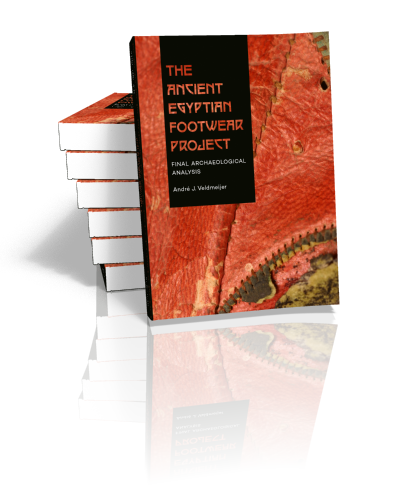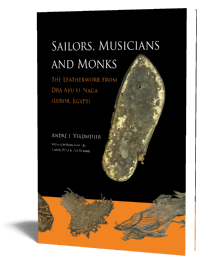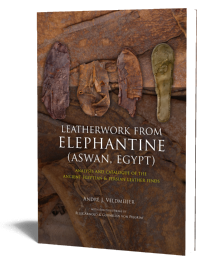Abstract:
The Ancient Egyptian Footwear Project (AEFP) is a multidisciplinary, ongoing research of footwear in ancient Egypt from the Predynastic through the Ottoman Periods. It consists of the study of actual examples of footwear, augmented by pictorial and textual evidence.
This volume evaluates, summarises and discusses the results of the study of footwear carried out by the AEFP for the last 10 years (which includes the objects in the major collections in the world, such as the Egyptian Museum in Cairo, the British Museum in London and the Metropolitan Museum in New York, as well as from various excavations, such as Amarna, Elephantine and Dra Abu el-Naga). All published material is depicted and some previously unpublished material is added here.
The work on physical examples of footwear has brought to light exciting new insights into ancient Egyptian technology and craftsmanship (including its development but also in the relationships of various footwear categories and their origin), establishing and refining the dating of technologies and styles of footwear, the diversity of footwear, provided a means of identification of provenance for unprovenanced examples, and the relationship between footwear and socio-economic status. The archaeometrical research has lead to the reinterpretation of ancient Egyptian words for various vegetal materials, such as papyrus.
Contents
Preface
Introduction
Short History of Footwear in Egyptology
Research Objectives
Layout of the Present Work
Terminology
Materials and Methods
Studied Objects
Methods
Hands-On Study
Vegetal Materials (Other than Wood)
Skin and Leather
Wood
Metal
Archaeological Context: A Problematic Inheritance
Museological Context: Problems and Priorities
Description
Footwear Made of Vegetal Material (Other than Wood)
Sandals
Shoes
Footwear Made of Leather
Sandals
Shoes
Mules
Footwear Made of Wood
Tomb Sandals
Pattens
Typology
Materials Used in Footwear
Vegetal Materials (Other than Wood)
The Samples
Ägyptisches Museum und Papyrussammlung, Berlin
The Petrie Museum of Egyptian Archaeology, University College London
The British Museum, London
Discussion
Skin and Leather
Wood
Metal
Diachronic Change
Introduction
Technology
Shape
Distribution
Production
Tanneries, Workshops and Craftsmen
Tools
Use, Wear and Repair
Signs of Use
Wear
Evidence of Repair
Utility Footwear vs. Footwear for the Afterlife
Royal vs. Commoners
Gender in Footwear
Symbolism and Status
Foreign Footwear and Influences in Egypt
Conclusions
Bibliography












